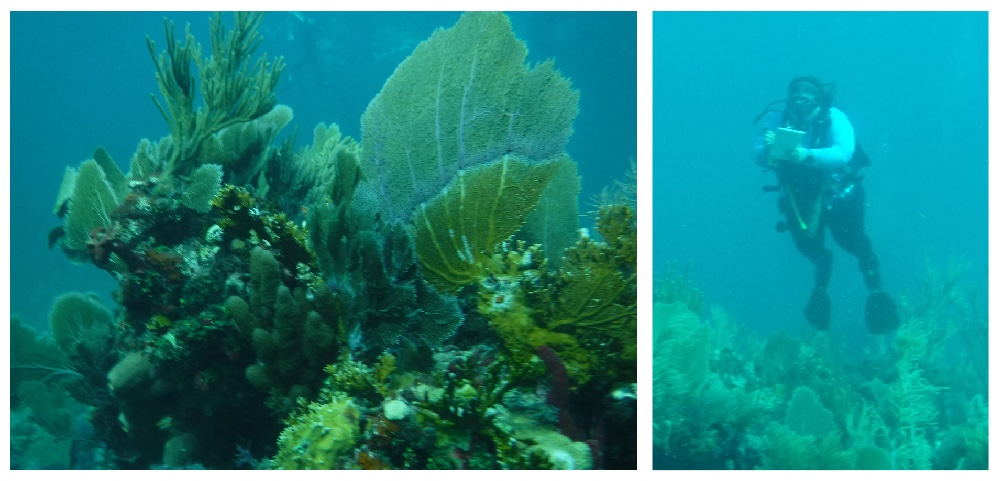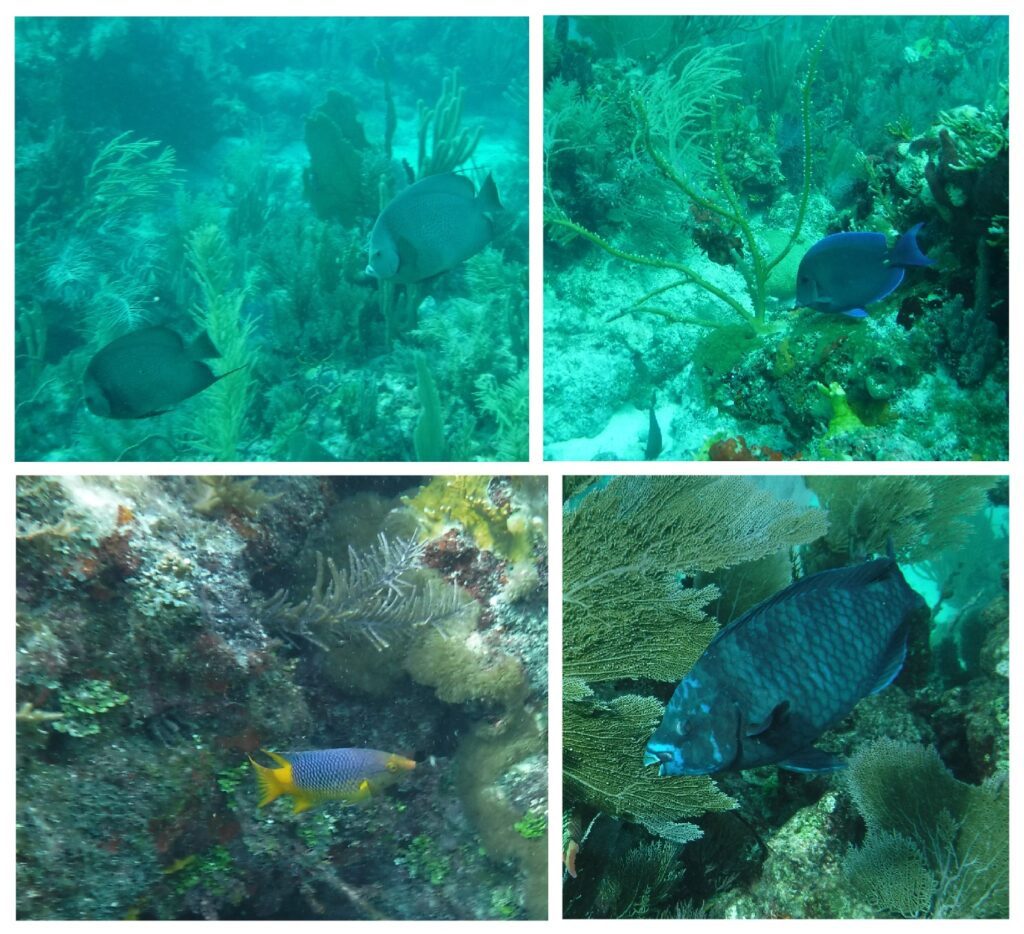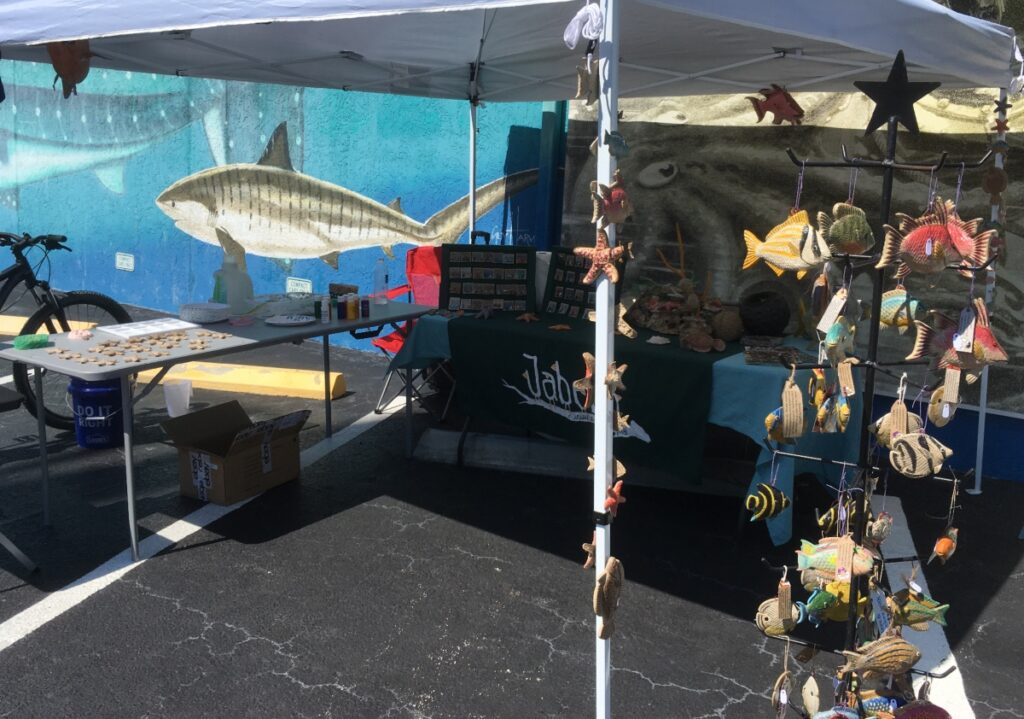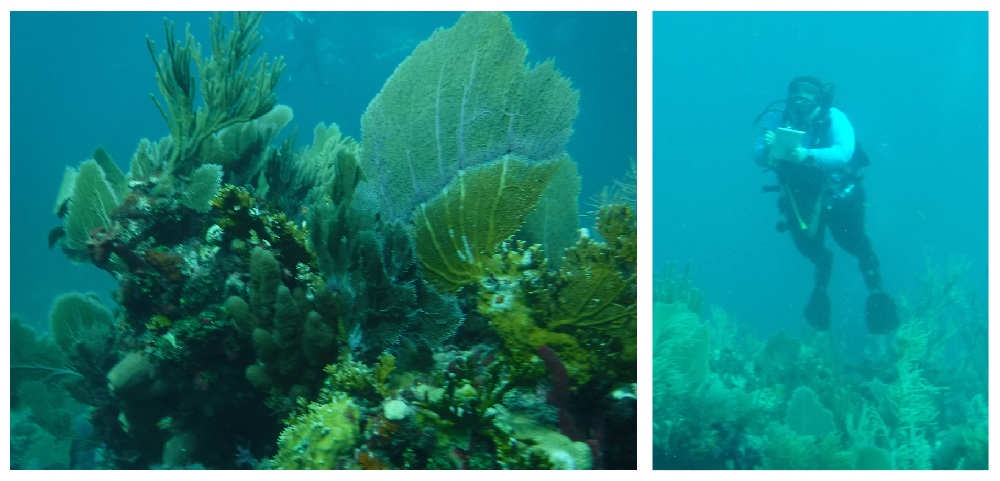This October I fully immersed myself into a watery parallel universe, a sister-verse to the Bird-verse I reside in most of the year. The Reef Environmental Education Foundation, REEF.org, holds it’s Reef Fest in Key Largo every fall to empower citizen scientists enthusiastic about fish and reef habitat to go out looking for and identifying fishes. After joining a few years ago I was able to attend Reef Fest this year myself.

This year the conference was held October 14 – 18. Morning activities included scuba diving, or snorkeling to survey fish in the Florida Keys and/or Kayaking around the mangroves and sea grass flats. In the afternoons there were talks on fish identification and some of the many interesting projects Reef is involved in. I went on all the dives I could fit in and conducted my first independent surveys.
Fish and sea creatures where my first huge interest as a young naturalist. Back in the 1970’s when I was a kid and my family lived in Homestead my parents brought us down to the Keys frequently to dive and snorkel. I always had my nose in my old Peterson Guide to the Atlantic fishes and had many species memorized. On these family trips I got to snorkel over the extensive outcrops of branching corals before they were destroyed by ocean acidification from global warming.
Now in my 50’s I began gravitating back to my early interests pursuing projects to transform our extra cereal box material into fish ornaments with the far fetched ambition of representing the incredible diversity of fish in the Florida Keys. A couple years ago I met Joy who introduced me to REEF fish survey project and I began tagging along with her surveys. I soon learned that REEF participants are avid explorers of the ocean not only to gather survey data but on personal quests for new experiences and new species for their life lists.

As with E-bird, REEF has an ever growing database of fish based on location for many regions around the world. It is free to join and surveys can be submitted on line. they have an extensive archive of education material to better identification skills or to learn about fishy topics of all kinds. Every couple weeks they have another “Fishinar” that can be attended live on line.
I also took along my bicycle blender, cereal box scraps and my starfish molds for a Pop-up at the History of Diving Museum in Islamorada. Under a tent outside the entrance they allowed me to demonstrate how to make sea creatures, such as starfish, from paper pulp by pressing it into molds. They carry our earrings in the gift shop but I brought designs they do not ordinarily have plus our fishy ornaments and magnets. Plus many of their visitors went home with a newly made paper pulp starfish. October is still hot for the Florida Keys and being in the parking against a concrete wall made it worse. But in spite of that challenge the starfish dried much faster.

Some of the other places that I stopped at to visit because they carry our earrings where the Congaree National Park in South Carolina, Everglades and Biscayne National Park visitor centers, Fairchild Botanical Gardens and the Frost Museum in Miami, The Environmental Learning Center in Vero Beach, and Skidaway Island State Park outside Savannah Georgia. I am hoping to develope our paper pulp project so that any of these places would find it feasible for us to come do a program.
